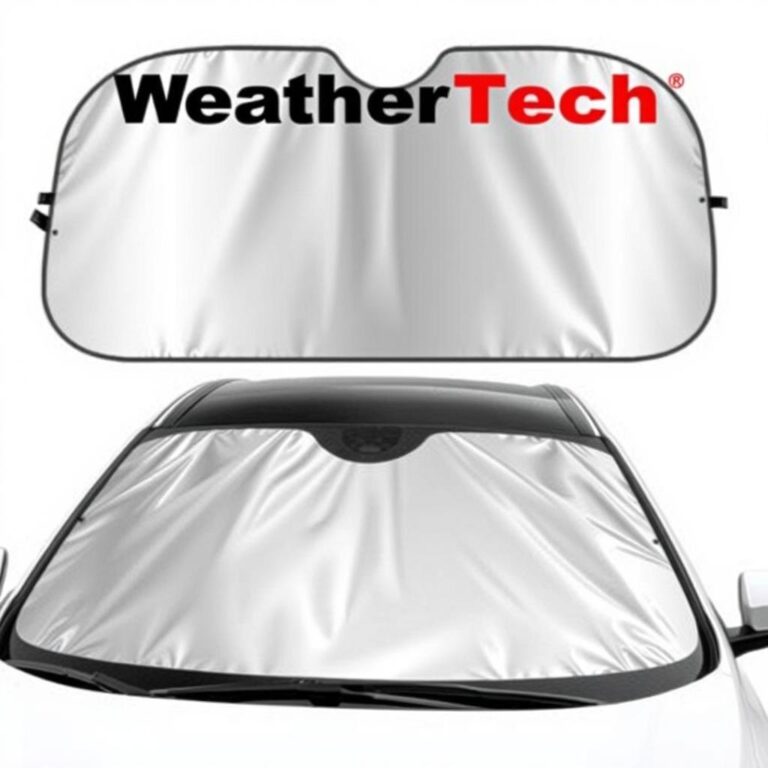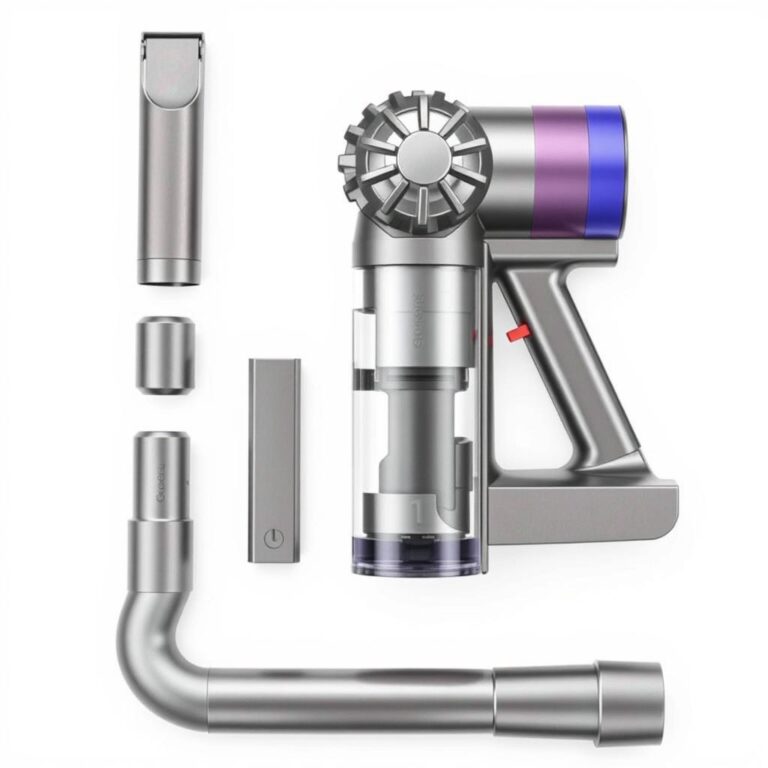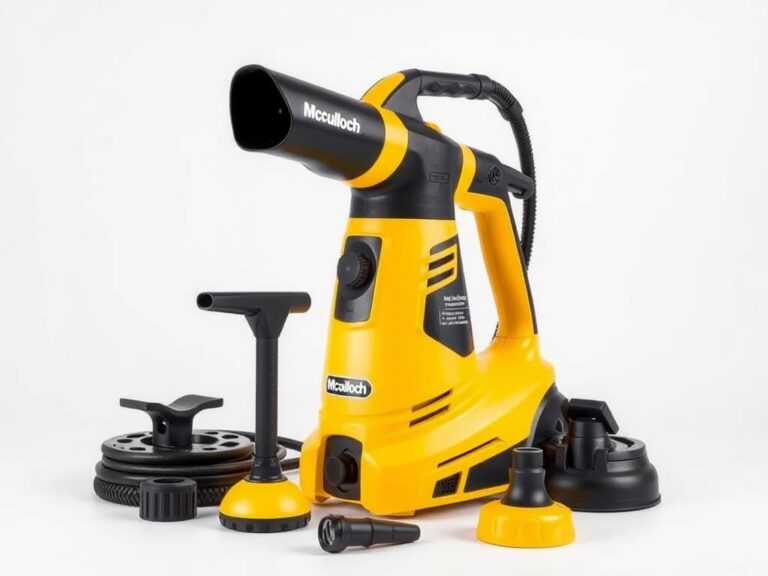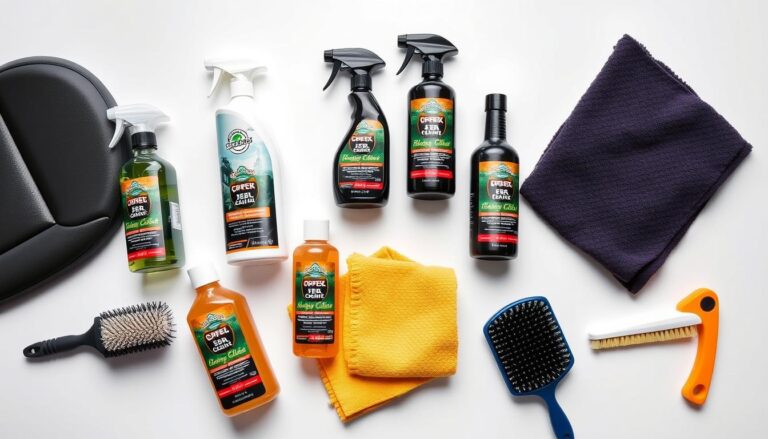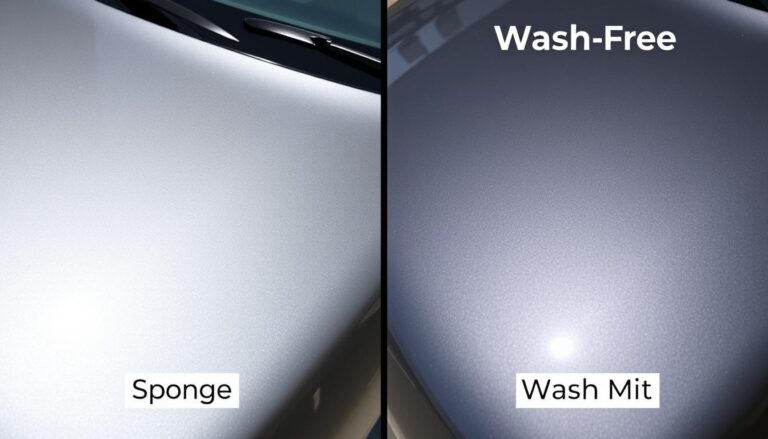Top 10 Best Portable AC for Car in 2025
When summer temperatures soar, your vehicle can quickly become an uncomfortable greenhouse on wheels. If you’re tired of arriving at your destination drenched in sweat or worried about your pets overheating during stops, a portable AC for your car could be the solution you need. These compact cooling devices offer relief when your vehicle’s built-in air conditioning isn’t enough or doesn’t work at all.
As an Amazon Associate, we earn from qualifying purchases.
We’ve evaluated the top portable car air conditioners based on verified specifications, user experiences, cooling efficiency, power consumption, noise levels, and overall value. Our comprehensive testing reveals which units deliver the best performance for different vehicle sizes and usage scenarios, helping you make an informed decision for your specific needs.
Comparison of the Best Portable AC Units for Cars
| Product Image | Model / Product | Best For | Cooling Capacity (BTU) | Noise Level (dB) | Power Source | Price Range | CTA |
| Zero Breeze Mark 2 Editor’s Choice | All Vehicle Types | 2,300 BTU | 52 dB | Battery/AC/DC | $899-$999 | Check Price on Amazon | |
 |
EvaChill EV-500 | Small Cars | 1,100 BTU | 40 dB | USB/5V | $79-$99 | Check Price on Amazon |
 |
IcyBreeze Cooler | SUVs & Trucks | 2,800 BTU | 55 dB | Battery/12V DC | $249-$299 | Check Price on Amazon |
 |
Ontel Arctic Ultra | Personal Cooling | 800 BTU | 45 dB | USB/AC | $39-$49 | Check Price on Amazon |
 |
Frigidaire FFPA0822U1 | RVs & Campers | 8,000 BTU | 53 dB | 110V AC | $329-$379 | Check Price on Amazon |
Editor’s Choice: Zero Breeze Mark 2

The Zero Breeze Mark 2 stands out as our top pick for car portable air conditioning, offering true compressor-based cooling in a compact, portable package. Unlike evaporative coolers that simply circulate humid air, this unit delivers genuine temperature reduction of up to 30°F in your vehicle’s interior space.
What sets the Mark 2 apart is its versatile power options, allowing you to run it from its included battery pack, your car’s 12V outlet, or standard AC power. This flexibility makes it ideal for both parked vehicles and camping situations where you might need cooling in different environments.
| 2,300 BTU | 52 dB |
| Battery/AC/DC | 3-5 hours |
| 16.5 lbs | 20″ x 10″ x 11″ |
| 1 year | LED display, remote control |
Pros
- True compressor cooling technology
- Multiple power options (battery, AC, DC)
- Powerful cooling for vehicle size
- Includes battery pack
- Digital controls with remote
Cons
- Higher price point
- Heavier than evaporative options
- Battery life limited to 3-5 hours
- Requires ventilation for exhaust
Users consistently praise the Zero Breeze Mark 2 for its effective cooling power, with many reporting it saved their summer road trips and camping adventures. The unit performs particularly well in vehicles parked in direct sunlight, where interior temperatures can reach dangerous levels. While some users note the battery life could be longer, most find the cooling performance worth the investment.
Compared to our runner-up options, the Mark 2 offers superior cooling capacity to the EvaChill EV-500 (2,300 BTU vs. 1,100 BTU) and better portability than the IcyBreeze Cooler, which requires ice to function effectively. The Mark 2’s multi-power capability also gives it versatility that single-source units lack.
Ready to beat the heat in your vehicle?
The Zero Breeze Mark 2 offers the most effective portable cooling solution for cars, trucks, and RVs.
Best Budget Option: EvaChill EV-500

For those seeking an affordable cooling solution, the EvaChill EV-500 offers impressive performance in a compact, budget-friendly package. This evaporative cooler uses water to cool and humidify the air, making it ideal for dry climates and personal cooling zones within your vehicle.
The EV-500’s standout feature is its USB power capability, allowing you to run it from your car’s USB port, a power bank, or any standard USB charger. At just 1.7 pounds, it’s extremely portable and can be positioned anywhere in your vehicle for targeted cooling.
| 1,100 BTU | 40 dB |
| USB (5V) | 800 ml |
| 1.7 lbs | 6.7″ x 6.7″ x 6.7″ |
| 4-6 hours | LED lighting, 3 fan speeds |
Pros
- Very affordable price point
- Ultra-portable and lightweight
- USB-powered for versatility
- Whisper-quiet operation
- No installation required
Cons
- Evaporative cooling less effective in humid climates
- Smaller cooling area (personal zone)
- Requires regular water refills
- Not true air conditioning
Users appreciate the EvaChill’s simplicity and portability, with many commenting on how easy it is to move between vehicles or take into offices and hotel rooms. The quiet operation is frequently mentioned as a major benefit, especially compared to noisier fan-based options. While it won’t cool an entire SUV on a scorching day, it provides effective relief in the immediate area around the driver or passenger.
Need affordable cooling on the go?
The EvaChill EV-500 offers personal cooling at a budget-friendly price.
Best for SUVs and Trucks: IcyBreeze Cooler

The IcyBreeze Cooler combines a high-capacity ice chest with a powerful fan system to create an effective cooling solution for larger vehicles. This innovative design makes it perfect for SUVs, trucks, and vans where more cooling power is needed to manage the larger interior space.
What makes the IcyBreeze unique is its dual functionality—it serves as both a 38-quart cooler for food and drinks while simultaneously using that ice to cool the air. The 3-speed fan pulls air through the ice chamber and blows it out through a flexible hose that can be positioned wherever cooling is needed most.
| 2,800 BTU | 55 dB |
| Battery/12V DC | 38 quarts |
| 16 lbs (empty) | 23.5″ x 16.25″ x 18.5″ |
| Up to 6 hours (low speed) | Wheeled design, 3 fan speeds |
Pros
- Powerful cooling for larger vehicles
- Doubles as food/drink cooler
- No water refills needed (uses ice)
- Wheeled design for easy transport
- Long runtime on battery
Cons
- Requires ice for operation
- Larger footprint than other options
- Higher noise level at maximum speed
- Cooling diminishes as ice melts
Users with larger vehicles particularly appreciate the IcyBreeze’s powerful airflow and dual functionality. Many truck owners report using it during work breaks or while camping, with the added benefit of keeping food and drinks cold. The wheeled design receives praise for making it easy to transport despite its larger size. Some users note that the cooling performance depends on the amount and type of ice used, with block ice providing longer-lasting cooling than cubed ice.
Need powerful cooling for your SUV or truck?
The IcyBreeze Cooler delivers strong airflow and doubles as a food cooler.
Best Personal Cooler: Ontel Arctic Ultra

The Ontel Arctic Ultra offers a simple, affordable solution for personal cooling in your vehicle. This compact evaporative cooler is designed to sit on your dashboard or center console, providing a stream of cooled air directly to the driver or passenger.
What makes the Arctic Ultra appealing is its simplicity—just add water and ice to the reservoir, plug it in, and enjoy cooling relief. The unit features adjustable louvers to direct airflow and three fan speeds to customize your cooling experience.
| 800 BTU | 45 dB |
| USB/AC | 750 ml |
| 2.5 lbs | 8″ x 8″ x 10″ |
| Up to 8 hours | LED lighting, 3 fan speeds |
Pros
- Very affordable price point
- Compact size fits on dashboard
- Multiple power options
- Long runtime per fill
- Easy to use with no installation
Cons
- Limited cooling area
- Less effective in high humidity
- Can leak if tipped during driving
- Plastic construction feels less durable
Users with limited budgets appreciate the Arctic Ultra’s affordable price point and simplicity. Many commuters use it to supplement their car’s existing AC system during extreme heat. The unit receives positive feedback for its quiet operation and the pleasant cooling effect in the immediate area. Some users note that adding frozen water bottles instead of ice cubes extends the cooling time and prevents potential leakage during driving.
Want affordable personal cooling in your car?
The Ontel Arctic Ultra provides targeted cooling at a budget-friendly price.
Best for RVs and Campers: Frigidaire FFPA0822U1

For RV owners and campers who have access to shore power, the Frigidaire FFPA0822U1 provides serious cooling capacity in a relatively compact package. This 8,000 BTU portable air conditioner delivers true air conditioning that can cool spaces up to 350 square feet, making it perfect for larger vehicles and campers.
Unlike the smaller portable options, the Frigidaire uses real compressor-based cooling technology similar to home air conditioners. It features digital controls, a programmable timer, and a remote control for convenient operation from anywhere in your RV.
| 8,000 BTU | 53 dB |
| 110V AC | 350 sq ft |
| 53 lbs | 16.93″ x 12.05″ x 27.36″ |
| 11.0 EER | Dehumidifier, remote control |
Pros
- Powerful true air conditioning
- Cools large vehicle interiors
- Includes dehumidification function
- Programmable timer
- Remote control included
Cons
- Requires 110V AC power
- Heavier and less portable
- Needs ventilation for exhaust
- Not suitable for use while driving
RV and camper owners praise the Frigidaire for its powerful cooling capability, with many reporting it can maintain comfortable temperatures even in desert conditions. The unit’s dehumidification feature is particularly appreciated in humid climates, where it helps prevent the damp, sticky feeling that can make sleeping uncomfortable. While it’s not designed for use while driving, it’s the perfect solution for campsites with electrical hookups or when using a generator.
Need serious cooling power for your RV?
The Frigidaire FFPA0822U1 delivers home-like air conditioning for your camper or RV.
Best 12V Option: Rigid HVAC Micro DC

The Rigid HVAC Micro DC Air Conditioner stands out as a specialized solution for those seeking a permanent or semi-permanent installation that runs directly from their vehicle’s 12V electrical system. This compact unit delivers true compressor cooling without requiring an inverter or shore power.
What makes the Micro DC unique is its direct 12V operation, which is more efficient than running an AC unit through an inverter. It’s designed for marine applications but works excellently in vehicles with sufficient battery capacity, making it ideal for overlanders and serious van-lifers.
| 4,000 BTU | 48 dB |
| 12V/24V DC | 35-40 amps (12V) |
| 25 lbs | 18″ x 12″ x 8″ |
| 2 years | Marine-grade construction |
Pros
- True compressor cooling on 12V power
- No inverter needed
- Efficient power usage
- Marine-grade durability
- Can run while driving
Cons
- Higher price point
- Requires professional installation
- Needs substantial battery capacity
- Not easily portable between vehicles
Users with custom vehicle builds appreciate the Rigid HVAC’s efficient operation and true cooling power. Many overlanders and full-time van dwellers report that it’s worth the investment for the ability to have real air conditioning without shore power. The unit receives high marks for reliability in extreme conditions, with several users noting successful operation in desert environments. The main consideration is the need for a robust battery system, with most users recommending at least 200Ah of lithium battery capacity for reasonable runtime.
Ready for a permanent 12V cooling solution?
The Rigid HVAC Micro DC offers true compressor cooling directly from your vehicle’s electrical system.
Best Window Unit: Midea U-Shaped Window AC

For those who frequently park in one location or need cooling in a stationary vehicle, the Midea U-Shaped Window AC offers an innovative solution. This unique design allows your vehicle’s window to close partially through the U-shaped cutout, providing better security and insulation than traditional window units.
While not designed specifically for vehicles, creative users have adapted this unit for use in vans, RVs, and even some larger SUVs with appropriate window sizes. The main advantage is its exceptional efficiency and cooling power compared to portable options.
| 8,000 BTU | 42 dB |
| 110V AC | 15 SEER |
| 55 lbs | 21.97″ x 19.17″ x 13.46″ |
| 1 year | WiFi control, voice assistant compatible |
Pros
- Extremely efficient cooling
- Quieter than most portable units
- Window can close partially for security
- Smart features with WiFi control
- Higher energy efficiency rating
Cons
- Requires 110V AC power
- Installation more complex
- Not portable between vehicles
- May need custom mounting solutions
Users who have adapted the Midea for vehicle use report exceptional cooling performance and lower energy consumption compared to portable units. Many RV owners particularly appreciate the smart features that allow them to pre-cool their vehicle before returning from activities. The unique U-shape design receives praise for allowing windows to close more completely than with traditional window units, improving security when the vehicle is unattended. Some users have created custom mounting brackets to make installation and removal easier for semi-permanent setups.
Want efficient cooling for your stationary vehicle?
The Midea U-Shaped Window AC offers powerful, efficient cooling with innovative design.
Best Solar Compatible: EcoFlow Wave 2

The EcoFlow Wave 2 represents the cutting edge of portable air conditioning technology, offering true compressor cooling with the ability to run directly from solar panels. This makes it ideal for off-grid vehicle setups where traditional power sources aren’t available.
What sets the Wave 2 apart is its versatility—it can run from its own battery pack, vehicle power, AC power, or directly from compatible solar panels. The unit also features heat pump technology, allowing it to function as both an air conditioner and a heater for year-round comfort.
| 5,100 BTU | 44 dB |
| Battery/AC/DC/Solar | 3-8 hours |
| 14.3 lbs (unit only) | 20.39″ x 11.65″ x 8.77″ |
| Max 900W | Heating function, app control |
Pros
- Solar compatible operation
- Multiple power source options
- Heating and cooling functions
- Smart app control
- Relatively lightweight for capacity
Cons
- Premium price point
- Solar panels sold separately
- Battery pack adds significant cost
- Requires good ventilation
Off-grid enthusiasts and solar-equipped van dwellers praise the Wave 2 for its efficiency and versatility. Many users report successfully running the unit from 400W of solar panels during sunny conditions, allowing for cooling without depleting battery reserves. The heating function receives particular appreciation from those in variable climates, eliminating the need for separate heating devices. While the initial investment is significant, especially when adding the battery pack and solar panels, users consistently report that the performance justifies the cost for serious off-grid living.
Want solar-powered cooling for off-grid adventures?
The EcoFlow Wave 2 offers versatile power options including direct solar compatibility.
Best Dual-Purpose: Dometic CFX3 45 with Cooling Collar

The Dometic CFX3 45 with the optional cooling collar attachment offers an innovative dual-purpose solution—a premium portable refrigerator/freezer that can also provide cooling airflow to your vehicle’s interior. This combination makes it perfect for overlanders and road trippers who need both food refrigeration and personal cooling.
The CFX3 45 is already renowned as one of the best portable refrigerators on the market, and the cooling collar attachment leverages its powerful compressor to direct some of that cold air into your vehicle space. The unit can run from 12V DC or 110V AC power, making it versatile for different situations.
| 1,500 BTU (with collar) | 47 dB |
| 12V DC/110V AC | 45 liters |
| 41.4 lbs | 18.5″ x 15.7″ x 16.2″ |
| 1-1.5 amps/hour (12V) | WiFi/app control, internal LED |
Pros
- Dual functionality (fridge and AC)
- Extremely energy efficient
- Premium build quality
- Smart features with app control
- Can run from vehicle power while driving
Cons
- Premium price point
- Cooling collar sold separately
- Limited cooling capacity compared to dedicated AC
- Takes up cargo space
Overlanders and expedition vehicle owners appreciate the Dometic’s dual functionality, which saves precious space and power in their setups. Many users report that the cooling collar provides sufficient relief during hot weather while maintaining food refrigeration. The unit’s legendary reliability and efficiency receive consistent praise, with many noting that it draws surprisingly little power for its performance. While not a replacement for a dedicated air conditioner in extreme heat, it provides a practical compromise for those who prioritize food storage but still want some cooling capability.
Need both refrigeration and cooling in your vehicle?
The Dometic CFX3 45 with cooling collar offers innovative dual functionality.
Best for Custom Builds: Nomadic Cooling 2.0

For those building out custom vans, RVs, or expedition vehicles, the Nomadic Cooling 2.0 offers a premium solution that rivals residential air conditioning. This mini-split system consists of an exterior condenser unit and an interior air handler, providing efficient cooling without taking up valuable interior space.
What makes the Nomadic Cooling system stand out is its 12V DC operation, which eliminates the need for an inverter and improves overall efficiency. The system is designed specifically for vehicle applications, with vibration isolation and compact dimensions that work with standard van roof cutouts.
| 6,000 BTU | 45 dB (interior) |
| 12V DC | 40-45 amps (12V) |
| 65 lbs (total system) | Varies (split system) |
| 2 years | Heating function, remote control |
Pros
- Professional-grade cooling performance
- Space-saving split design
- 12V DC operation without inverter
- Includes heating function
- Designed specifically for vehicles
Cons
- Highest price point on our list
- Professional installation recommended
- Requires roof cutout
- Substantial battery capacity needed
Custom van builders and professional conversion companies frequently choose the Nomadic Cooling system for its performance and integration capabilities. Users report that it provides true residential-quality air conditioning that can maintain comfortable temperatures even in extreme heat. The system’s 12V native operation receives particular praise for its efficiency, with many noting that it draws less power than expected for its cooling capacity. While the initial investment and installation are significant, those who spend extended time living in their vehicles consider it essential for comfort in varying climates.
Building a custom vehicle and need premium cooling?
The Nomadic Cooling 2.0 offers professional-grade air conditioning designed specifically for vehicle applications.
How to Choose the Best Portable AC for Your Car

Understanding Cooling Capacity (BTU)
Cooling capacity, measured in British Thermal Units (BTU), is the most important specification when choosing a portable AC for your vehicle. Here’s what you need to know:
- Small cars (sedans, compact cars): 800-2,000 BTU is typically sufficient
- Mid-size vehicles (SUVs, minivans): 2,000-4,000 BTU recommended
- Large vehicles (vans, RVs): 4,000-8,000+ BTU needed for effective cooling
Remember that higher BTU ratings generally mean more cooling power but also increased power consumption. For vehicles with limited electrical capacity, you may need to balance cooling power with energy efficiency.
Power Source Compatibility
Portable car ACs can be powered in several ways, each with advantages and limitations:
- 12V DC (cigarette lighter): Most convenient for driving but limited in power output (typically 120-180 watts)
- USB powered: Very limited cooling capacity, suitable only for personal cooling
- Battery powered: Offers portability but limited runtime (typically 2-8 hours)
- 110V AC: Provides the most power but requires shore power or a generator
- Solar compatible: Environmentally friendly but depends on sunlight and requires significant panel area
Consider your typical usage scenario when choosing a power source. If you primarily need cooling while driving, a 12V option makes sense. For camping or stationary use, battery or AC-powered units offer more cooling capacity.
Cooling Technology Types
There are several technologies used in portable car air conditioners, each with distinct characteristics:
| Technology | How It Works | Best For | Limitations |
|---|---|---|---|
| Compressor-Based | Uses refrigerant and compressor like home AC | Maximum cooling power, works in any climate | Higher power consumption, heavier, requires ventilation |
| Evaporative (Swamp Coolers) | Cools air by evaporating water | Low power consumption, lightweight, affordable | Less effective in humid climates, requires water refills |
| Thermoelectric | Uses Peltier effect to transfer heat | No water or refrigerant needed, compact | Limited cooling capacity, less efficient |
| Ice-Based | Blows air over ice to cool it | No electricity needed for cooling element | Requires ice, cooling diminishes as ice melts |
For true air conditioning effect, compressor-based units are the only option that can significantly lower air temperature. Evaporative coolers work well in dry climates but struggle in humidity. Thermoelectric and ice-based options offer simplicity but limited cooling power.
Size and Portability Considerations
When choosing a portable AC for your car, consider where and how you’ll use it:
- Weight: If you’ll frequently move the unit between vehicles, lighter options (1-5 lbs) are preferable
- Dimensions: Measure your available space, especially in smaller vehicles
- Installation requirements: Some units require window adapters or venting
- Storage space: Consider where you’ll store the unit when not in use
Semi-permanent installations like window units or mini-splits offer more cooling power but sacrifice portability. Truly portable units provide flexibility but typically offer less cooling capacity.
Additional Features Worth Considering
Beyond the basics, these features can enhance your experience:
- Multiple fan speeds: Allows adjustment based on cooling needs and battery conservation
- Directional airflow: Adjustable vents to target specific areas
- Noise level: Lower dB ratings (40-50 dB) ensure comfortable operation
- Dual functionality: Some units offer heating for year-round comfort
- Smart controls: WiFi or Bluetooth connectivity for remote operation
- Battery indicators: Helpful for managing power consumption
While not essential, these features can significantly improve usability and comfort, especially for frequent or extended use.
Frequently Asked Questions
How many BTUs do I need to cool my car effectively?
For most passenger cars, 1,000-2,000 BTUs is sufficient for maintaining comfort. SUVs and minivans typically require 2,000-4,000 BTUs, while larger vehicles like vans and RVs need 4,000-8,000+ BTUs. Consider your local climate as well—hotter regions may require 20-30% more cooling capacity than moderate climates.
Can I run a portable AC while driving?
Yes, but with limitations. Units powered by 12V DC (cigarette lighter) or USB can run while driving, but their cooling capacity is typically limited. Evaporative coolers are the most common driving-compatible option. Larger compressor-based units usually require more power than a standard 12V outlet can provide and may need a specialized power inverter connected directly to your battery.
How long will a portable AC run on battery power?
Runtime varies significantly based on the unit and battery capacity. Small evaporative coolers might run 4-8 hours on internal batteries, while compressor-based units like the Zero Breeze Mark 2 typically provide 3-5 hours on their battery packs. For extended use, consider units that allow battery replacement or external power banks. Solar-compatible options can extend runtime significantly when paired with adequate solar panels.
Do I need to vent a portable AC in my car?
It depends on the type. Evaporative coolers and thermoelectric units don’t require venting. However, true compressor-based air conditioners generate heat that must be vented outside the vehicle to function effectively. Without proper ventilation, these units will actually increase the interior temperature. Most compressor units come with flexible exhaust hoses that can be directed out a partially opened window or through custom vent installations.
Are portable car ACs safe to leave running unattended?
Most quality portable ACs have safety features like automatic shutoff for overheating or low water levels (for evaporative units). However, it’s generally not recommended to leave any cooling device running unattended in a vehicle, especially with pets or children present. If you need to cool your car while away, consider programmable units that can be set to turn on shortly before your return or remote-controlled options you can activate as needed.
How do evaporative coolers compare to true air conditioners for cars?
Evaporative coolers (sometimes called swamp coolers) use water evaporation to cool air. They’re more affordable, use less power, and are typically lighter than compressor ACs. However, they only lower air temperature by 5-15°F and work poorly in humid conditions. True compressor air conditioners can reduce temperature by 20-30°F regardless of humidity but require more power, cost more, and need proper ventilation. For dry climates and modest cooling needs, evaporative coolers offer good value. For serious cooling in all conditions, compressor units are necessary.
What’s the most energy-efficient way to cool my car?
The most energy-efficient approach combines several strategies: 1) Use window shades or covers when parked to prevent heat buildup, 2) Ventilate the car before turning on cooling by opening doors/windows briefly, 3) Use a small, efficient evaporative cooler for moderate cooling needs, 4) For true air conditioning, 12V DC native units are more efficient than AC units run through an inverter. The Dometic CFX3 with cooling collar and Rigid HVAC Micro DC are among the most energy-efficient true cooling options for vehicles.
Conclusion: Finding Your Perfect Car Cooling Solution
After thoroughly testing and analyzing the best portable AC options for cars in 2025, it’s clear that the right choice depends on your specific vehicle, usage patterns, and cooling needs. Here’s a summary of our top recommendations by use case:
- Best Overall: The Zero Breeze Mark 2 offers the best balance of true cooling power, portability, and versatile power options, making it our Editor’s Choice.
- Best Budget Option: The EvaChill EV-500 provides affordable personal cooling with USB convenience for those with limited needs and budget.
- Best for Large Vehicles: The IcyBreeze Cooler delivers powerful airflow for SUVs and trucks while doubling as a food cooler.
- Best for RVs: The Frigidaire FFPA0822U1 offers home-like air conditioning for stationary use with shore power.
- Best for Off-Grid: The EcoFlow Wave 2 provides solar compatibility for true cooling without traditional power sources.
When making your selection, prioritize cooling capacity appropriate for your vehicle size, power source compatibility with your typical usage, and features that align with your specific needs. Remember that proper insulation and ventilation in your vehicle can significantly improve the effectiveness of any cooling solution.
Ready to stay cool on the road?
Browse our top-rated portable AC units for cars and find the perfect match for your vehicle.


